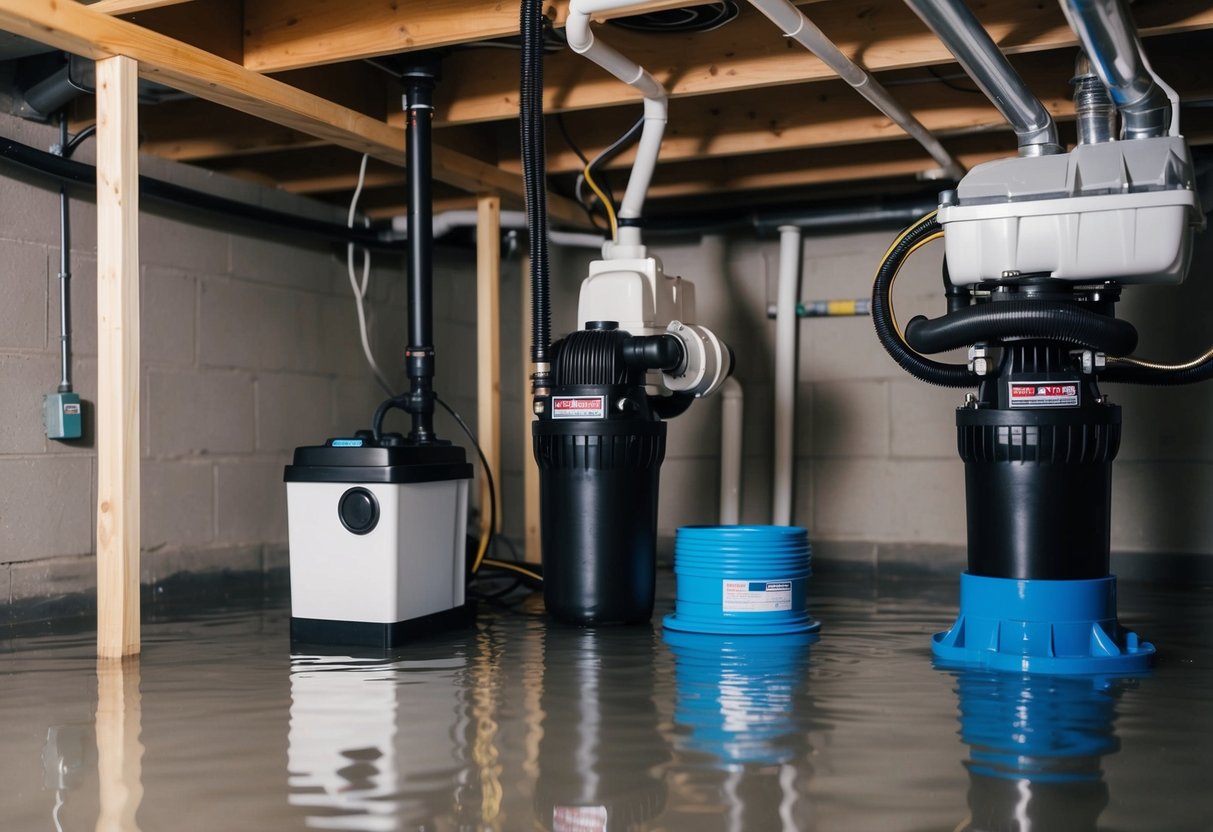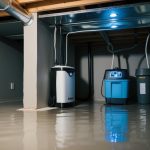Basement Makeovers: DIY Waterproofing Solutions for a Dry, Cozy Space
Installing Sump Pumps and Backup Systems

Sump pumps are essential in preventing basement flooding. They effectively remove water accumulated in a sump basin, usually found in the basement. Installation starts with choosing the right pump capacity to match the basement’s needs, ensuring it can handle the expected water volume.
A battery backup sump pump adds an extra layer of security, especially during power outages. This system takes over when the main pump fails, ensuring uninterrupted operation. It’s important to select a reliable battery type and test it periodically to maintain preparedness for emergencies.
An alarm system can alert homeowners when water levels rise too high or the battery backup engages. This early warning allows for quick intervention to avoid severe water damage. Regular maintenance and testing of the sump pump and backup system can extend their lifespan and efficiency.
Proper placement of the sump pump is crucial. It should be installed at the lowest point in the basement where water naturally collects. This ensures the system captures water effectively before it can spread and cause dampness.
In selecting components, quality should never be compromised for cost. Performance and durability are paramount, as is choosing a reputable brand known for reliable sump pump systems. Adjusting the system according to the specifics of the basement layout and potential water challenges will optimize its effectiveness.
Proper Drainage Systems and Solutions
Effective drainage in basements is crucial to prevent water accumulation and associated damages. Proper systems safeguard against dampness and create a more hospitable environment.
Setting Up Effective Drainage
Implementing a drainage system often begins with choosing the right type. French drains offer a popular choice due to their simplicity and effectiveness. These systems typically involve trenches with a perforated pipe surrounded by gravel or rock, guiding excess water away from the basement.
Interior drainage systems also play a significant role, especially when exterior solutions aren’t feasible. Interior systems are installed along the basement’s perimeter, collecting water below the floor level and directing it to a sump pump. Regular maintenance, like clearing debris from pipes, ensures these systems function optimally.
Importance of Proper Slope and Channels
Ensuring a correct slope is key to directing water flow effectively. The ground around a home’s foundation should naturally slope away, preventing water pooling. A 1-inch slope per foot over a distance of at least 10 feet is a general guideline.
Channels are another essential aspect, guiding water to an appropriate drainage outlet. Blocked channels can lead to inefficient water redirection, emphasizing the need for routine inspection and clearing. The integration of well-designed channels and slopes into drainage systems reduces basement water issues significantly.
Using Dehumidifiers to Control Humidity Levels
Dehumidifiers play a crucial role in managing basement humidity. Basements are prone to dampness due to their location below ground level. This often leads to moisture seeping in through walls and floors. By using a basement dehumidifier, homeowners can effectively reduce humidity levels, creating a drier and more comfortable environment.
Choosing the right dehumidifier involves considering the size of the basement. Larger areas may require more powerful models, while smaller basements can be managed with less capacity. Energy-efficient dehumidifiers are also recommended to minimize electricity usage while maintaining effective moisture control.
Basement dehumidifiers work by drawing in damp air, removing moisture, and expelling dry air back into the room. This process helps in preventing mold growth and eliminating musty odors. It is important to regularly empty the water collection tank or ensure the unit is connected to a drain to maintain continuous operation.
Regular maintenance is essential for optimal performance. This includes cleaning the air filter and checking for any signs of wear and tear. By keeping humidity levels in check, dehumidifiers contribute to a healthier indoor environment.



